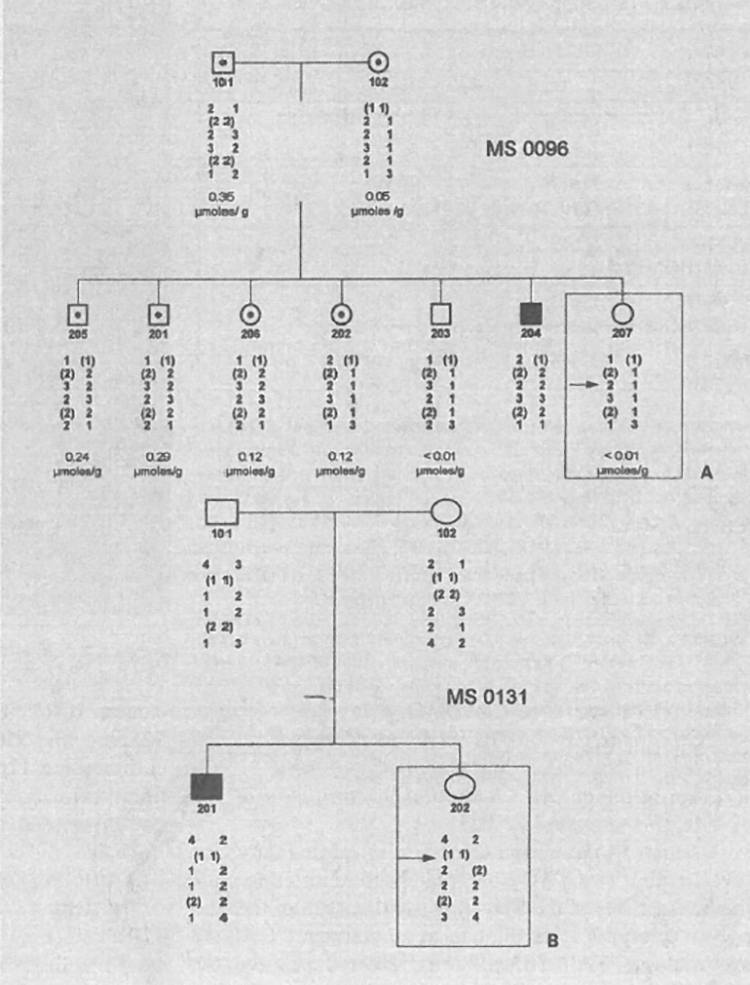Fig. 1.

Pedigrees MS0096 and MS0131 showing critical recombination events placing the cystinosis in a region flanked by D17S1583 and D17S1828. In both pedigrees, filled symbols are used for affected individuals and open symbols denote unaffected individuals; in pedigree MS0096 (A), cystine content of PMNL is shown in micromoles per gram PMNL protein and heterozygous at-risk individuals as defined by a PMNL cystine content above the detection level of 0.01 μmol/g protein are denoted by dots within open symbols. Genotypes for the markers D17S1583, D17S1798, D17S1828, D17S1584, D17S938, and D17S796 are shown (top to bottom); those alleles where phase could not be established are shown in brackets. A cross-over, indicated by an arrow, occurs in the paternal haplotype of individual 207 who is at-risk but not heterozygous; this suggests the cystinosis locus to be located distal to D17S1828. D17S1798 is not informative in the individual showing recombination and thus cannot be excluded from the cystinosis region. In pedigree MS0131 (B), the unaffected and the affected child share the same alleles of D17S1583 which is therefore excluded from the cystinosis locus (arrow); D17S1798 is not informative. Note that the affected individual 204 in pedigree MS0096 is homozygous for all markers from D17S1798 to D17S938 (for details on pedigrees, marker genotyping, and cystine measurements refer to the Methods section).
